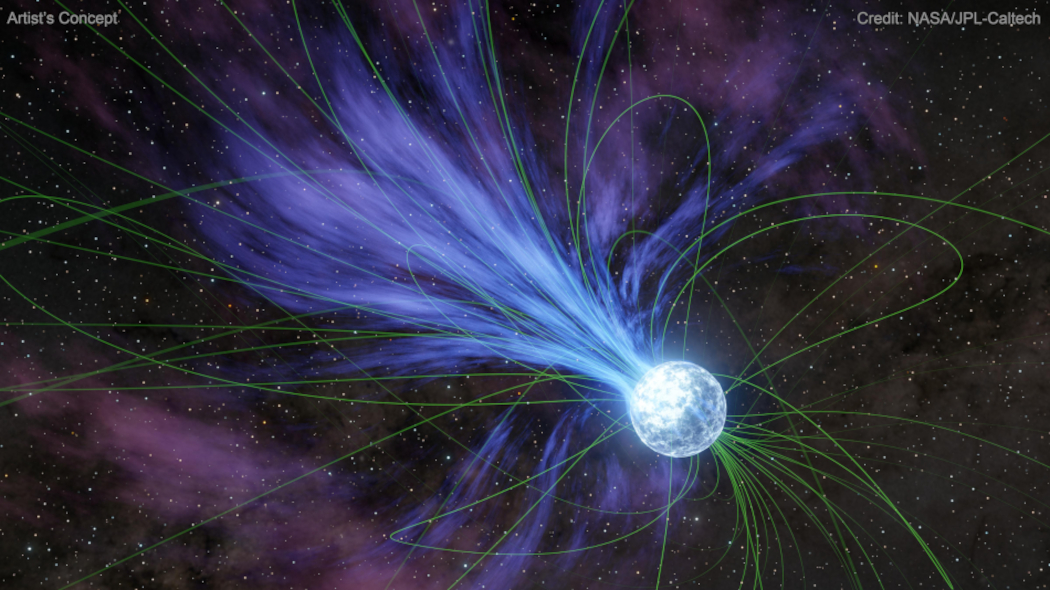
 Credit: NASA/JPL-Caltech
Credit: NASA/JPL-Caltech
The FRB-Glitch Connection
It's hard to study things that go bump in the night, especially if the bumps are very short. In 2007, a review of radio telescope observations of fast-spinning neutron stars, called pulsars, revealed something astonishing: a rapid, transient burst of radio radiation of a type never seen before, producing more energy in a fraction of a second than the Sun does in an entire year. Since 2007, a few dozen of these events, now known as "Fast Radio Bursts" (or FRBs), have been detected. But because they last only a fraction of a second or so, identifying the source of the burst, and the physics behind the large amount of energy released, has been very difficult. But a breakthrough in our understanding of the physical mechanism behind FRBs has just been obtained, thanks to the combined work of the NuSTAR and NICER X-ray observatories. They studied a mysterious source called SGR 1935+2154 (shown in the artistic rendition above), a "soft gamma-ray repeater" in the Milky Way, first identified by pulses of gamma-ray emission, and subsequently identified as a "magnetar". Magnetars are spinning neutron stars possessing an extremely strong magnetic field, about a trillion times stronger that the magnetic field at earth's surface. In 2020, SGR 1935+2154 was also discovered to be a source of a fast radio burst. Two years later, SGR 1935+2154 began acting strangely, emitting outbursts of high-energy radiation, alerting NICER and NuSTAR to begin a long series of observations to monitor the behavior of the source. These observations happened to show that the magnetar experienced two "glitches" when the rotation rate of the star suddenly sped up. In between the glitches, the spin rate rapidly decreased to the pre-glitch period, and the magnetar also produced an FRB. Scientists postulate that the glitches were caused when the solid surface of the magnetar cracked due to stress produced by the superstrong magnetic field, causing the rotation of the star to increase. Material from the interior of the neutron star could erupt through the crack, forming a transient "wind" of neutron-star stuff off the surface of the magnetar along the magnetic field, producing the fast radio burst and decreasing the rotation rate. The NuSTAR and NICER observations provide the first evidence associating FRBs with glitching magnetars, but it still remains to be demonstrated if all FRBs are produced in this way.
Published: February 26, 2024
<
HEA Dictionary ● Archive
● Search HEAPOW
● Other Languages
● HEAPOW on Facebook
● Download all Images
● Education ● HEAD
>

Each week the HEASARC
brings you new, exciting and beautiful images from X-ray and Gamma ray
astronomy. Check back each week and be sure to check out the HEAPOW archive!
Page Author: Dr. Michael F. Corcoran
Last modified Monday, 04-Mar-2024 15:50:35 EST


